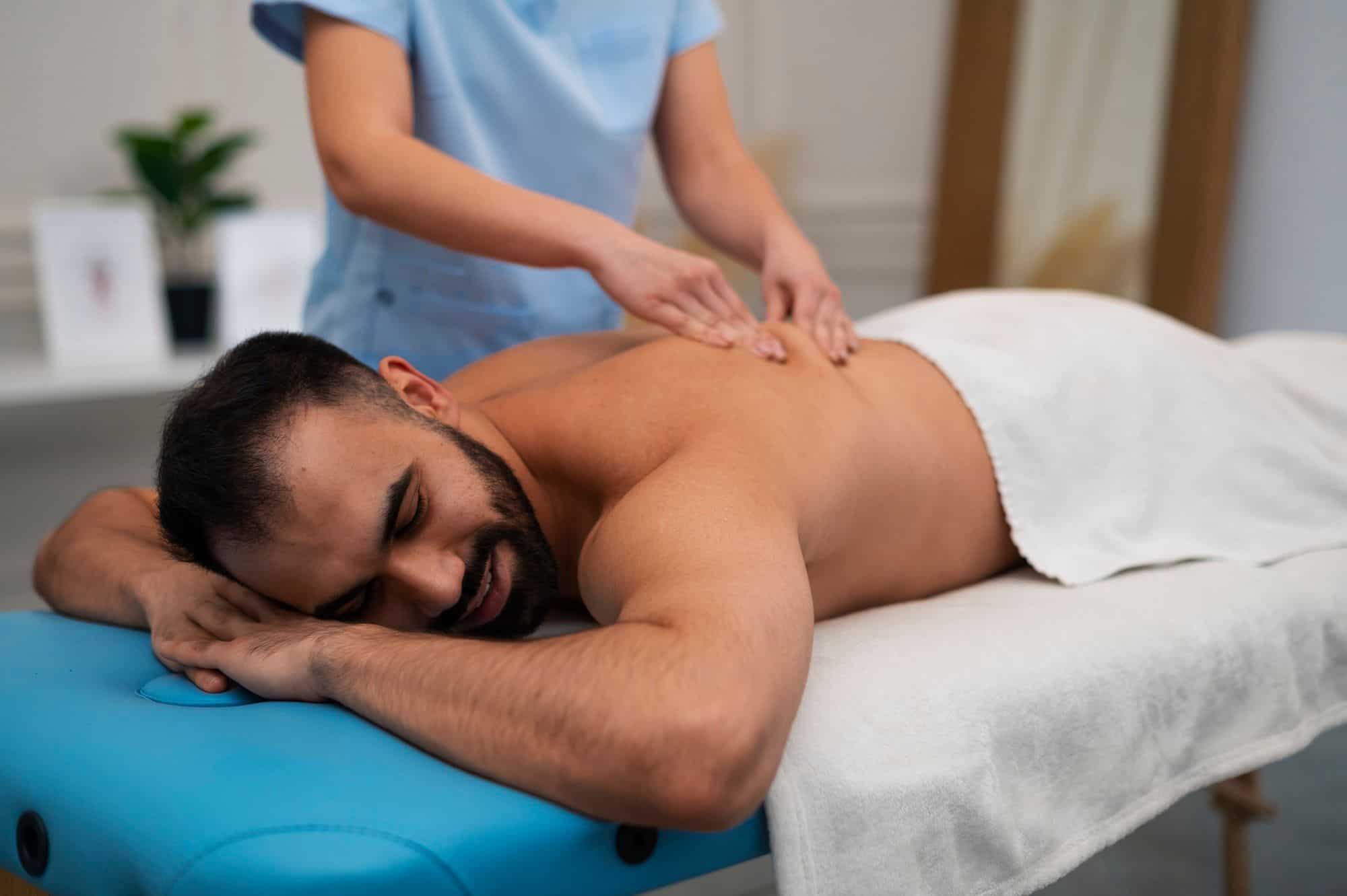Body massage has long been a cornerstone of wellness and relaxation, offering many benefits beyond indulgence. From alleviating pain to reducing stress, the advantages of massage therapy are backed by a growing body of scientific evidence. Whether you’re an athlete looking for muscle recovery or simply seeking a break from the daily grind, massage offers a versatile solution for various needs. While numerous massages are available, each with its techniques and benefits, the core principle remains: improving overall well-being by manipulating the body’s soft tissues.
What is Massage Therapy?
Massage therapy is a type of medical care in which the body’s soft tissues, such as the muscles, tendons, ligaments, and joints, are manually manipulated. It is a professionally oriented therapy to ease pain, lower stress levels, and enhance general well-being. As a complementary therapy to other medical procedures, massage therapy is grounded in medical and anatomical comprehension, unlike different kinds of relaxation or stress relief.
The practice employs various techniques to target different body tissue layers, such as pressing, kneading, rubbing, and tapping. These techniques improve blood circulation, relieve muscle tension, and promote relaxation. While the methods may vary depending on the type of massage and the therapist’s training, the ultimate goal is to provide therapeutic benefits that contribute to the healing and rejuvenation of the body.
The Science Behind Massage
The most fundamental way that massage works is by exerting pressure on the body’s soft tissues, such as the muscles, tendons, and ligaments. This pressure increases blood flow, which aids in more effective oxygen and nutrition delivery to the cells. In addition to helping to eliminate waste products from the muscles, such as lactic acid, improved circulation also aids in healing damaged tissues.
Beyond the circulatory benefits, massage therapy also impacts the nervous system. Massaging activates nerve receptors in the skin and muscles that communicate with the brain, releasing endorphins and other neurotransmitters. These biochemical changes are responsible for some of the emotional benefits of massage, such as stress reduction and improved mood.
The stress hormone cortisol, known to impair immunological function, cause weight gain, and advanced cardiovascular disease, has also been reduced by massage. Massage therapy can improve the body’s immunological response by reducing cortisol levels and enhancing its capacity to fight diseases and infections.
The condition of muscles is directly impacted by manipulating soft tissues. Muscle knots and adhesions, bands of uncomfortable, stiff tissue that can impair circulation and cause pain, stiffness, and inflammation, can be broken away with assistance. Massage treatment can increase flexibility and decrease muscle discomfort and stiffness by concentrating on these regions.
Types of Massages and Their Benefits
Each type of massage offers benefits and suits different needs and conditions. Whether you want to relieve stress, manage pain, or improve your athletic performance, a massage is likely proper for you.
Swedish Massage
Swedish massage is often considered the foundation of many massage techniques and is one of the most popular forms of bodywork. It employs five primary techniques: effleurage (gliding), petrissage (kneading), friction, vibration, and tapotement (tapping). These techniques target the uppermost layer of muscles and aim to promote relaxation, relieve muscle tension, and improve energy levels. Swedish massage is particularly beneficial for those looking to unwind and relieve stress.
Deep Tissue Massage
Deep tissue massage focuses on the deeper layers of muscle and connective tissue. It is frequently advised for people who endure constant pain or engage in strenuous physical activity because it is made to ease extreme tension. Deep pressure and gentle strokes can aid in physically breaking up muscular “knots” or adhesions, which can impair circulation and create pain and scar tissue.
Lymphatic Drainage Massage
To flush waste and toxins from the body’s tissues, the lymphatic system needs to be stimulated by this massage. It stimulates lymph flow by applying precise pressure and making regular circular motions. For those who have recently had surgery or suffer from an illness affecting the lymphatic system, a massage of lymphatic drainage is beneficial.
Sports Massage
Sports massage, designed especially for athletes, prepares the body for exercise and keeps it in top shape. Athletes can recover from workouts and injuries with its assistance. The techniques used in sports massage combine those used in other massage modalities and are specifically designed to fulfill the physical demands of each sport. It frequently focuses on body parts that have undergone excessive use or stress due to recurrent, often violent movements.
Hot Stone Massage
In hot stone massage, heated stones are placed on different body areas. The heat from the stones helps to relax muscles and improve blood flow, which makes it easier for the therapist to apply deeper pressure if needed. This type of massage is ideal for individuals who experience chronic pain or stress.
Wood Massage
Wood massage employs a wooden barrel-shaped tool to pressure the body’s muscles and soft tissues. This ancient technique is rooted in traditional Chinese medicine principles and is known for relieving muscle tension and promoting deep relaxation.
Tuina Massage
Tuina is a traditional Chinese therapeutic massage that involves various manual techniques to stimulate acupoints and improve the flow of energy (Qi) throughout the body. It often treats multiple health conditions, including pain, headaches, and digestive issues.
Reflexology
Reflexology focuses on applying pressure to specific points on the feet, hands, and ears that correspond to different organs and systems in the body. The theory behind this is that these areas contain “reflex” points that, when stimulated, can improve the health of the corresponding organs.
Full Body Massage
As the name suggests, a full-body massage involves treating the entire body, including the neck, shoulders, back, arms, legs, and feet. It aims to relieve tension and pain in the muscles and soft tissues, promoting deep relaxation and overall wellness.
Takeaway
Massage therapy offers many benefits, from stress reduction and pain relief to improved circulation and emotional well-being. With various types of massages available, each targeting specific needs, it’s clear that this form of therapy can be a valuable addition to your health regimen. Suppose you’re in the Kitchener-Waterloo area and are considering incorporating massage therapy into your wellness routine. In that case, Sunshine Cosmetic Clinic & Medi Spa and her team provide services tailored to your needs. Don’t just take our word for it; experience the benefits yourself. Contact us today to schedule your appointment.








